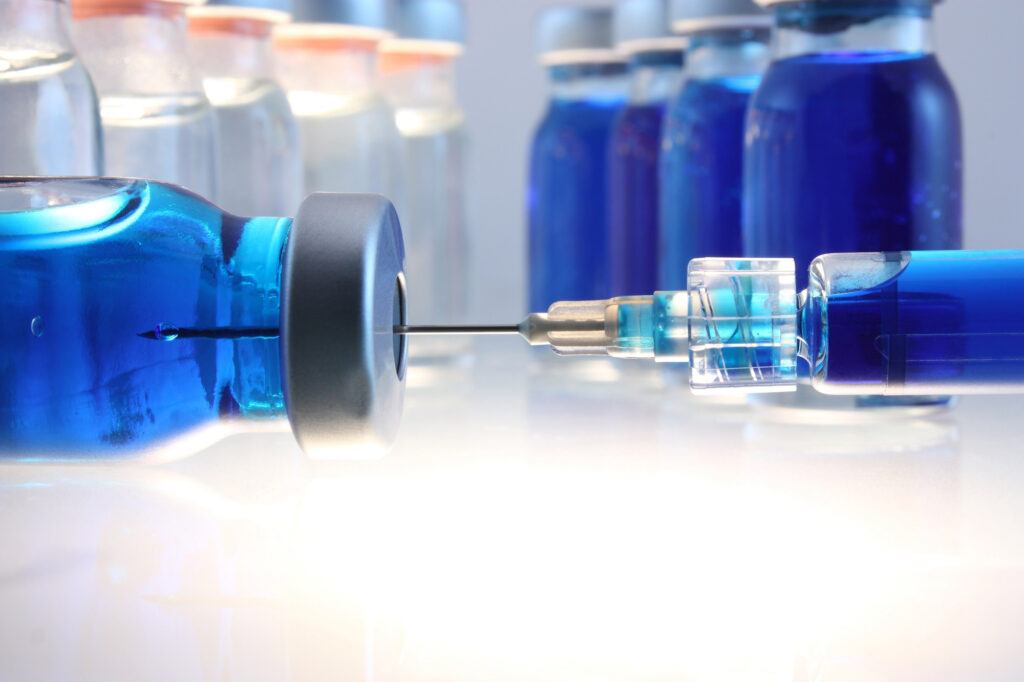Methylene Blue

Methylene Blue
Cognitive and Mitochondrial enhancer. Delays cellular aging and enhances key mitochondrial biochemical pathways. Improves cellular and mitochondrial function and decreases the production of proteins linked to Alzheimer’s.
How it works
- Methylene Blue improves memory by increasing brain cell respiration, or how the brain cell utilizes oxygen. It increases ATP production to provide more cellular energy for better overall brain function including cognition, mood, and memory.
- Methylene Blue is an antioxidant. MB is a metabolic enhancer and an antioxidant. Methylene Blue binds to superoxide and reduces it to water. It stops the oxidative cascade at its very beginning before it gets a chance to do damage.
History
In 1891, German physician and Noble Prize recipient Paul Ehrlich pioneered the use of Methylene Blue in the treatment of malaria.
Ehrlich discovered that MB would quickly concentrate in the brain and selectively target diseased tissues in the body.
Methylene Blue is called “Magic Bullet” for this unique action.
Methylene Blue has since been used to treat dementia, cancer chemotherapy, malaria, methemoglobinemia, urinary tract infections, cyanide, and carbon monoxide poisoning.
How we age
• Mitochondrial energy levels decline
• Attention, memory, and mental agility decline
• Tau proteins and amyloid plaques clog the brain
• Our radicals damage brain cell mitochondria
• Cerebral blood flow declines
All of these changes can happen at any age. And are a product of the food we eat, what we drink, lifestyle habits, the air we breathe, and more.
Methylene Blue to the rescue
Methylene Blue is an antidepressant
Methylene Blue is a monoamine oxidase inhibitor (MAOI). It inhibits MAO-A more than MAO-B but inhibits both at large doses.
Methylene Blue resists Alzheimer’s Disease
Alzheimer’s disease and other forms of dementia are associated with a buildup of the protein Tau. Clinical trials show that Methylene Blue inhibits Tau formation.
Methylene Blue is
anti-aging
MB increases mitochondrial complex IV by 30%, enhances cellular oxygen consumption by 37-70%, enhances biological pathways, and reverses premature cell aging.
Methylene Blue improves memory
A low dose of Methylene Blue increases brain activity and improves performance in memory tasks. MB is an antifungal agent and may inhibit Candida by causing mitochondrial dysfunction in this species
Methylene Blue makes you “feel young again”
It eliminates social anxiety. You’ll feel focused and more confident. Workouts seem easier because you have more energy. Your mitochondria are energized.
Methylene Blue helps eliminate stress & improves sleep
So you have more energy in any situation with a relaxed state of mind.
Upon purchasing Methylene Blue Liposomal Drops – Protocol for use will be provided.
Methylene Blue helps:
- Neurotransmitters: Methylene Blue inhibits monoamine oxidase and acetylcholinestera
se activity, increasing catecholamines and acetylcholine levels. And boosts serotonin and norepinep hrine, affecting anxiety, depression, and memory. - Mitochondrial Energy: Methylene Blue assists brain cell respiration by increasing oxygen. And donating electrons to the electron transport chain within mitochondria. This same process creates ATP within mitochondria from the food you eat. So MB contributes to this energy-production process instead of the nutrients you get from your food. Increasing cellular energy positively effects mood and memory.
- Neuroprotectant: Methylene Blue is a potent antioxidant. Reactive oxygen species are produced inside mitochondria. The first free radical that is formed inside a cell is superoxide. MB will bind to superoxide and reduce it to water. It stops the oxidative cascade at its very beginning before it gets a chance to do damage.